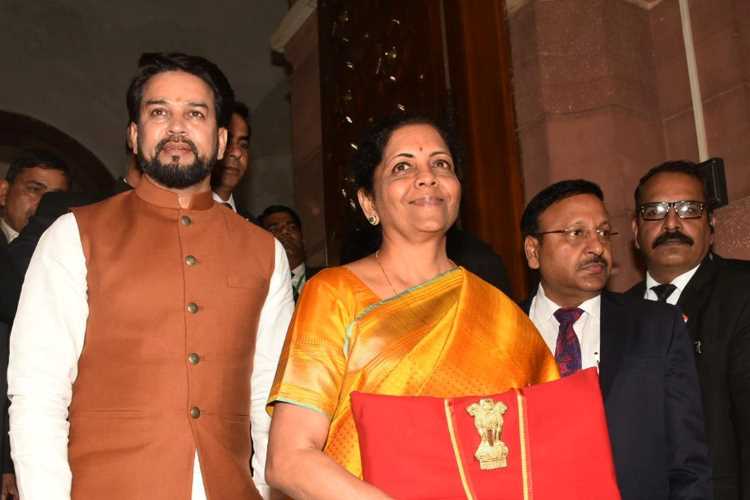
The Economic Survey 2019-20 introduced the idea of trust as a public good. The Budget came in the backdrop of an economic crisis and it was expected that the government will come up with proposals to stimulate consumption, investment and employment. Unfortunately, the Budget did not have anything to gain the trust of the stakeholders in these crucial areas.
It is difficult for the finance minister to please everyone, especially when the economy is in the grip of stagflation. With declining revenues, allocation of resources to boost economic activity is a major challenge. The Budget failed to come up with new ideas to overcome the resource constraint. The goal of reviving consumption demand and overall economic growth did not receive finance minister Nirmala Sitharaman’s attention. Here is she could have done to boost economic activity.
Agriculture and Rural Sector
More than 43% of India’s workforce are still engaged in agriculture and allied activities with a contribution of 16.5% to the gross domestic product (GDP) in 2019-20. The figure was 18.2% in 2013-14. Only 40% of the agricultural activities are mechanized. Apart from the existing schemes for this sector, Sitharaman has proposed viability gap funding to set up efficient warehouses at block, taluka levels under PPP model where state governments will provide land and self-help groups will manage. However, the allocation for Ajeevika Scheme for SHGs saw only 2.3% increase in allocation to Rs 10,005 crore. Warehouses and cold storages are essential for farmers to get a good price for their produce and for the government to rein in the prices of essential commodities.
READ: Doubling farmers’ income by 2022 a tough task, but not an impossible one
During the 2007-08 crisis and later, MGNREGA played a major role in stimulating consumption in rural India. Sitharaman was expected to allocate more funds for MGNREGA, but instead cut the allocation. Allocation for this crucial scheme declined from Rs 71,000 crore (revised estimates) in 2019-20 to Rs 61,500 crore.
Manufacturing sector
The manufacturing sector is crucial for creating jobs, increasing exports, and boosting revenues. The FM took steps to reduce imports, especially of electronic items, to energize local manufacturing. This may not work as expensive parts will make the final goods expensive, affecting the price competitiveness of these products. This segment also requires investment to expand and innovate that will come from foreign direct investment. Unfortunately, there is no proposal to earn the trust of investors, other than the cut in corporation tax. There is hardly anything to help the new economy investor who needs more than just tax reduction. This includes speedy approvals, less political intervention and social harmony.
Transportation
The Budget did not have anything significant for transportation, a sector that can be an engine of economic growth. Indian Railways requires a big push to increase freight transport. The passenger segment requires more affordable trains and a cut in travel time. Expansion of the rail track is going on at snails pace. Providing wifi in more stations and expanding PPP to 150 trains will not improve quality or timings. The earlier announcement of Rs 100 lakh crore for infrastructure development is repeated in the budget too.
Health and Education
Though health is replaced with wellness, a holistic health goal, it still proposes the idea shared in the 12th Five Year Plans such as conversion of district hospitals into medical colleges. But the FM brought one change, instead of public funding, hospitals will be on the PPP model. Considering the experience of PPP in health, the poorer segment of the society will be excluded from the benefits.
The proposed national education policy requires a huge investment from pre-school to higher education and technical education. The draft education policy gave priority to higher education. But as in the earlier periods, there is no adequate allocation to support the massive plan. Instead, the budget extends a proposal to raise funds for higher education through external commercial borrowings and FDI. The question arises is who will bear the burden of the commercial funds? Will it be passed on to the students?
India left the planning era and decided to draw the roadmap of the growth as per the demands of the market. Setting a target to be the third-largest economy of $5 trillion by 2024 cannot be the sole goal of the economy. We have enough evidence that trickle-down economics hasn’t worked anywhere. The redistributive system should be robust to ensure that the benefits of growth reach the bottom of the pyramid. This budget makers seem clueless about this. By not tackling slowing demand and low employment generation through sound proposals, India lost another year to bring economy back on track.
(Dr Resmi Bhaskaran is a development economist and policy analyst. Views expressed in this article are personal.)
Resmi Bhaskaran is a development economist based in Manipal, Karnataka.
